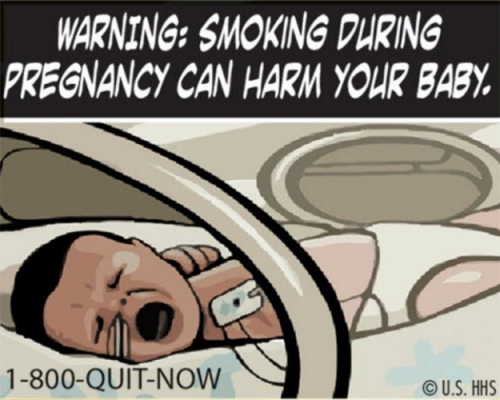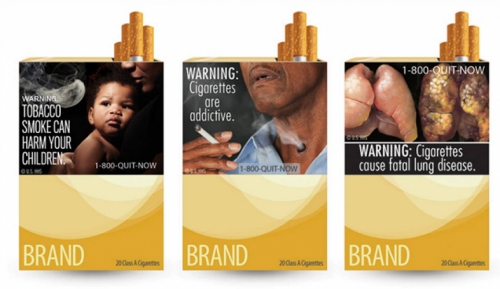The last time you bought something at a drug store, you probably noticed cigarette packages lined up in rows behind your cashier. Looking at the packages straight on, you probably didn’t even see the small health warnings on the side.
If you were at a drug store in Canada, you’d see cigarettes in the checkout area, too. But these packages are different. You might see a large image of decaying teeth, with big text on the front that reads: “Cigarettes cause mouth disease.”
In 2011, the FDA issued a rule requiring all cigarette packages sold in the United States to include color warning images. The tobacco industry sued the FDA and argued that the images conflicted with companies’ right to free speech. According to Seth Noar, a health communications researcher at UNC, it is likely that the FDA will propose new images.
Noar and Noel Brewer, a UNC researcher who studies health decision making, led a two-year study on the effectiveness of image-based warnings, which 77 nations already have on cigarette packages. These sometimes gruesome images are prominently displayed on packaging and often depict people suffering from tobacco-related illnesses.
The team did a meta-analysis of 37 experiments from 16 different countries with over 33,000 participants. Each study looked at reactions to picture-based warnings and text-only warnings. According to Noar, this is the first study of this scale to analyze all of these smaller experiments on image-based warnings.
The researchers found that in most studies, the image warnings were more effective than text warnings. Image warnings were more likely than text warnings to make people want to stop smoking, and they were better at getting people to think about the harms of smoking. The image-based warnings also made people feel negative about cigarettes and smoking in general.
This study looked at individuals’ initial reactions after seeing the image warnings briefly. To see how repeated exposure to these warnings affects people, Brewer and Noar are working on a study that will measure whether smokers who carry around cigarette packages with image warnings make more attempts to quit.
In this follow-up study, the researchers will also look at the social interactions that result from image warning labels. According to Brewer, having a package with a large pictorial warning on it sparks conversations about the harms of smoking and whether to quit.
“Smoking is often a social experience, and now the harms of smoking also become part of that experience,” Brewer says.
Among the nations that already have image warnings on packaging, some top players include Australia, Canada, and Uruguay. Canada was the first nation to use full-color image warnings back in 2001.
Australia and Uruguay have taken bolder approaches. Uruguay’s image warnings now take up 80 percent of cigarette packaging. Australia goes even further by using plain packaging, in which companies cannot include their brand colors or designs on packages. Instead, the brand name appears in plain, gray text with a large image warning.
According to Brewer, research shows that the majority of smokers no longer even notice the current small, text-based U.S. warnings, which have not been altered since 1984.



